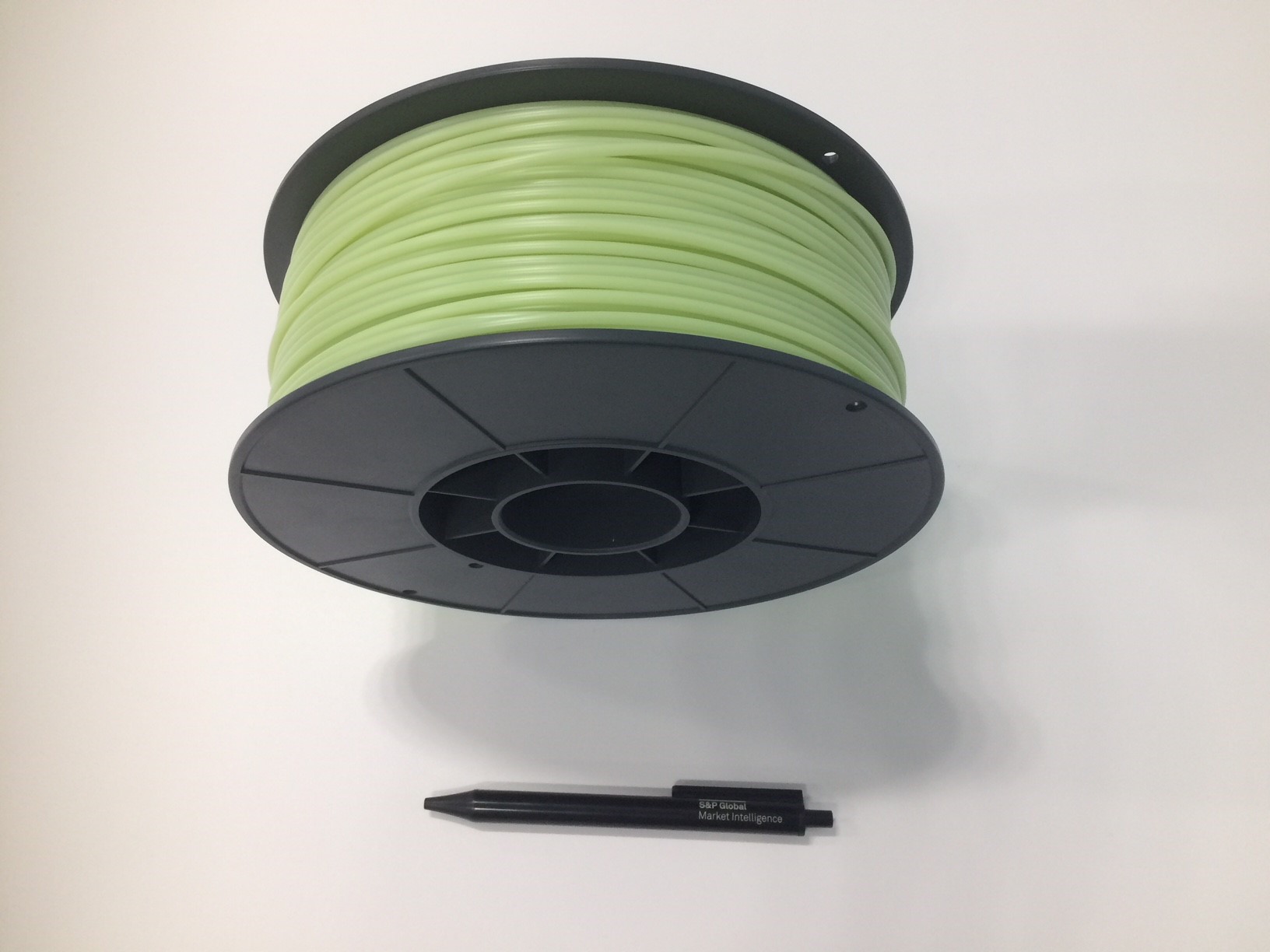DIC and Kanagawa Institute of Technology Develop a New Technology That Uses a Proprietary NIR fluorescent Dye to Add Value to 3D Printed Objects
- Business & Product
- News Release
Tokyo, Japan–DIC Corporation today announced the development, in collaboration with Kanagawa Institute of Technology, of a new technology that uses a near-infrared (NIR) fluorescent dye developed by DIC to embed copyright ownership, designer, directions for use and other information into 3D printed objects. In addition to adding value to 3D printed objects, the groundbreaking new technology promises to expand applications for 3D printers.
In recent years, 3D printers have become increasingly prevalent, with installation expanding in corporate as well as residential settings. Digital design data for 3D printed objects can be communicated to printers over networks, making it possible even for consumers to produce 3D printed objects at home. The spread of 3D printers is also expected to transform the manufacturing and logistics industries in the future.
With the combination of 3D printers and the Internet of Things (IoT) connectivity a particularly exciting prospect, technologies for embedding design data in 3D printed objects has become a focus of research in many areas. At present, the incorporation of IC chips is one of several methods under consideration, but the need to produce and embed additional components adds complexity and cost, eliminating one of the major benefits of 3D printing, namely, the fact that no specialized production technologies are required to fabricate 3D objects. Accordingly, demand has grown for the development of technologies that make it easier to embed information.
The new technology developed by DIC and Kanagawa Institute of Technology uses NIR fluorescent polymer developed by DIC to simultaneously create an information pattern in a 3D object as it is printed. Although a 3D printer with two print heads—one for the object and one for information patterns—is needed, the new technology obviates the need for IC chips or other extra components and facilitates the efficient completion of both processes simultaneously, making it possible to create information patterns within the object without affecting the surface design.
When exposed to NIR, which can travel through the exterior material, the dye in the polymer reacts, emitting NIR fluorescence (fig. 1). Using an infrared camera imaging to observe the fluorescence facilitates the recognition of patterns (fig. 2). The embedded text, codes and other information patterns thus make it possible for 3D printed objects to be recognized as physical “things,” that is, items that can be controlled across the IoT, thereby dramatically increasing their value.
DIC has used NIR fluorescent dye in collaborative projects with a number of universities and other companies aimed at developing technologies that contribute to advances in the field of medicine and respond to social imperatives. Confident that this newest technology offers promise for diverse applications beyond the addition of value to 3D printed objects, the Company will continue working to promote market research and address social imperatives. In so doing, DIC seeks to drive corporate growth and the advancement of society.
-Ends-
*Note: The files are in Adobe Acrobat Format. To view them you will need Acrobat Reader.




